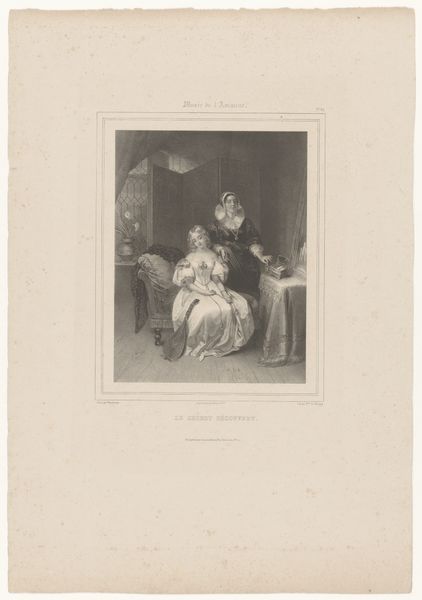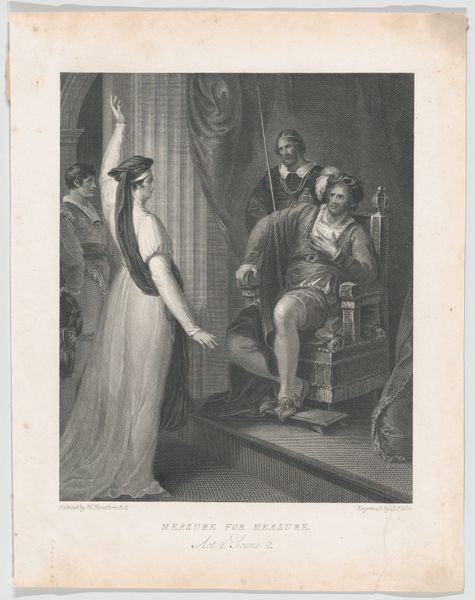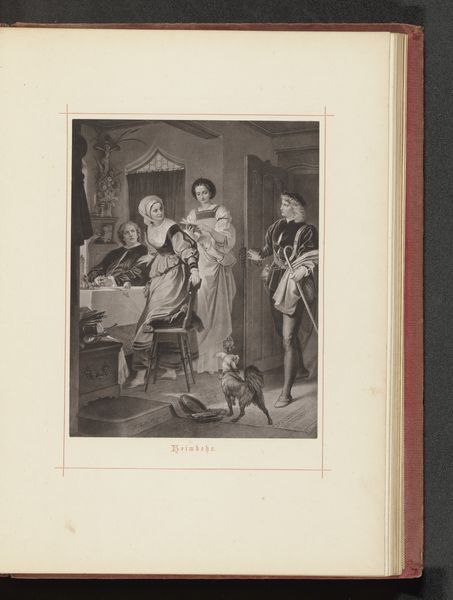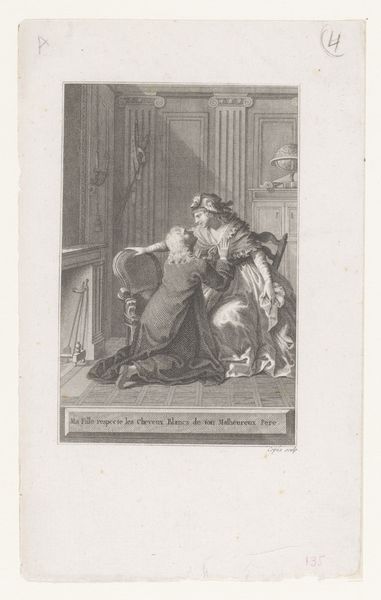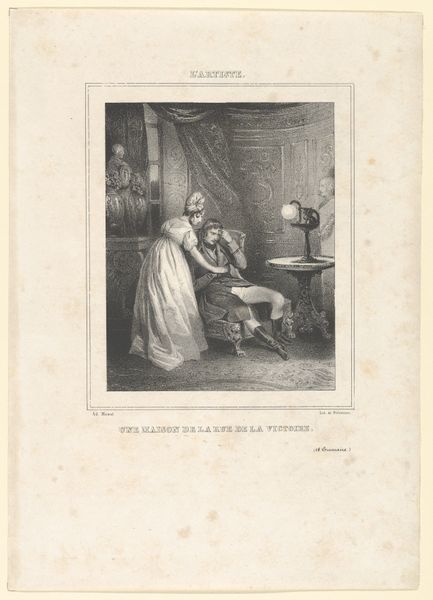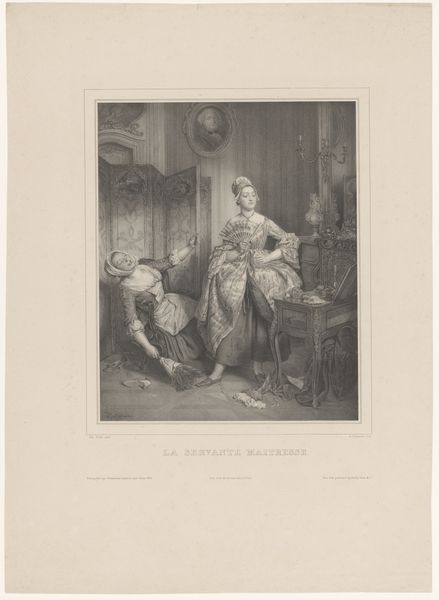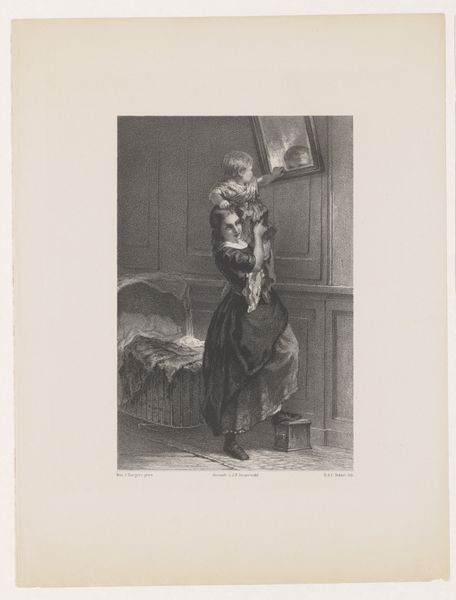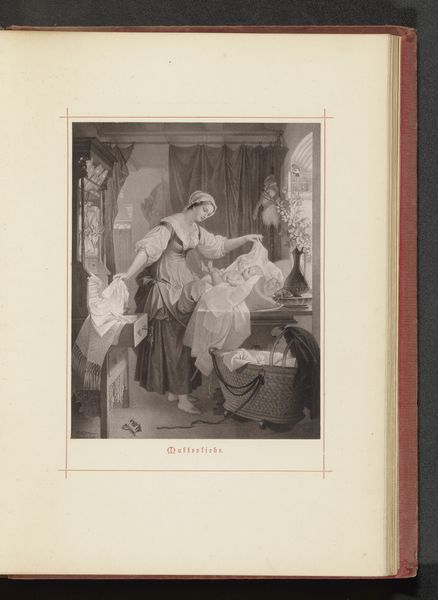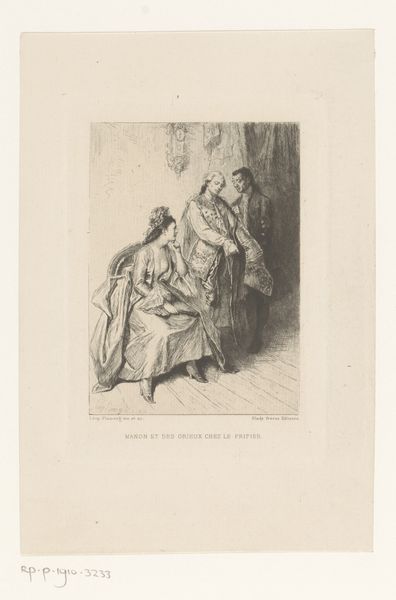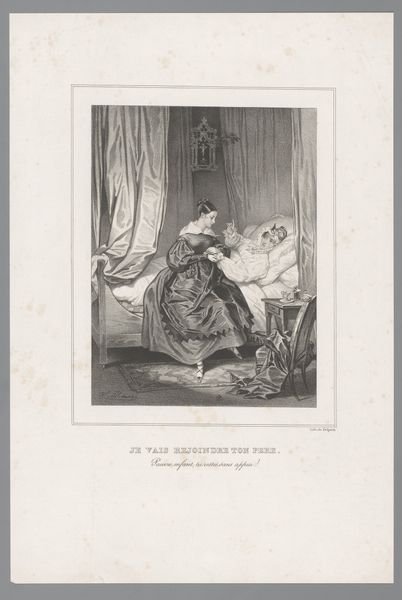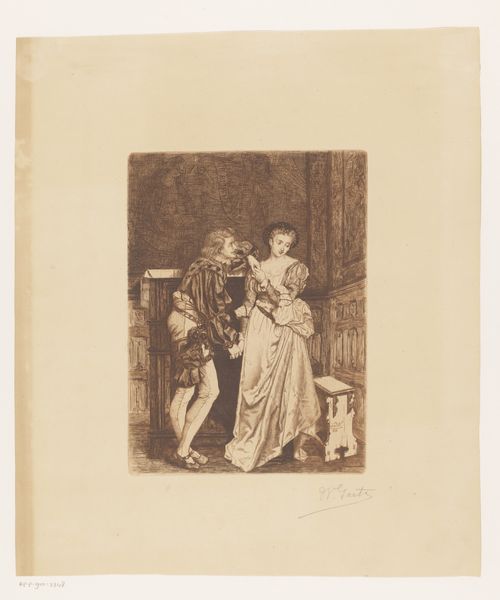
Reproductie van een tekening, voorstellende de ouders van Hermann op een bank naast een plein before 1885
0:00
0:00
Dimensions: height 167 mm, width 122 mm
Copyright: Rijks Museum: Open Domain
This is a reproduction of a drawing, made by an anonymous artist, depicting a couple, Hermann’s parents, sitting on a bench next to a town square. Likely made sometime in the 18th or 19th century in continental Europe, the drawing suggests the values of the bourgeois family unit and the public role of citizens. The couple is dressed modestly but tastefully, suggesting a rising middle class with the means for leisure. We can see by the design of their clothing and the architecture of the buildings behind them how the image seeks to portray a romanticized vision of urban life. The inclusion of a town square, a public gathering space, is significant, it shows us the values of community and public engagement within urban life. The image seems to create meaning through its visual codes, cultural references, and historical associations, but without knowing the original context or purpose of this drawing, interpreting the meaning of the artwork can only be speculative. By consulting period sources such as etiquette manuals and conduct books, we can gain further insights into the social meanings of the drawing. The interpretation of art is always contingent on social and institutional context.
Comments
No comments
Be the first to comment and join the conversation on the ultimate creative platform.
